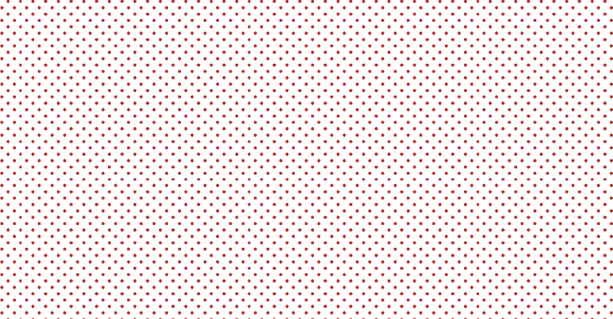An obsession with color and a nudge from her mother led Amber Guyton to create her interior design blog Blessed Little Bungalow.
What started off as a passion project is now a full-service interior design business. With her firm, Amber is reimagining what it means to make a house a home with a focus on affordability. Growing up in South Carolina in a single-parent household she learned that you can curate the perfect space without breaking the bank.
After spending 22 months of intentionally leveraging bonuses, tax refunds, and every dime she earned from her side hustle Amber eliminated almost $100K of debt unlocking a new level of financial freedom. So during the pandemic, after five years of running her new business, she left her lucrative tech marketing job to pursue her interior design services business as a full-time entrepreneur.

Her Agenda: What do you think sets Blessed Little Bungalow apart from other similar businesses?
Amber Guyton: Authenticity. From day one when I started Blessed Little Bungalow as a blog then turned side hustle to now full-time career my focus has always centered around helping clients make the most of their budgets while creating a home that they love.
The industry can feel pretentious leading you to believe you can only create something beautiful within a certain amount of dollars. A lot of interior designers and contractors have minimums for doing projects and that can oftentimes cause an overwhelming feeling for potential clients. It sets the precedence that a good-looking home that you feel good about is reserved for the privileged few. I have always been of the mindset of going against that grain.
Accessibility matters; you can mix high-value and low-value items, and you can buy the sofa from West Elm and the pillows from Target. Mixing brands that can make people comfortable with their budget. More than anything, I want people to love where they live.
Her Agenda: How have you used interior design to tell your story and show people who you are creatively?
Amber Guyton: Before I had any clients, I had my own home and showed off my skills and interests through my own home. When I started Blessed Little Bungalow in 2016. It was the second house I purchased. I just moved to San Antonio and was tired of living in an apartment so I bought a house. I moved in and I decorated the whole house in a week. Getting started [with attaining clients], I realized I did not have any projects or a portfolio. I used what I had, which was my own house.
Her Agenda: What is your favorite room in your space? What does it represent to you?
Amber Guyton: My favorite room in my current home here in Atlanta is my bedroom. I’m a big believer in moody bedrooms, those that you can walk into and it feels like a boutique hotel or a serene space where you can exit the world and rest.
My bedroom doesn’t have any electronics. There’s no TV, no radio, no Peloton. None of that exists in this space. Just the bed, dresser, nightstands, and some artwork. I have navy blue walls that are dark and moody. On the ceiling, I have a pop of color and pattern with some chartreuse, purple and navy wallpaper. My bed is on the brighter side, it’s chartreuse which is similar to a lime green, yellowish color. However, everything else is really soft, modern, and feminine with lucite and gold fixtures.
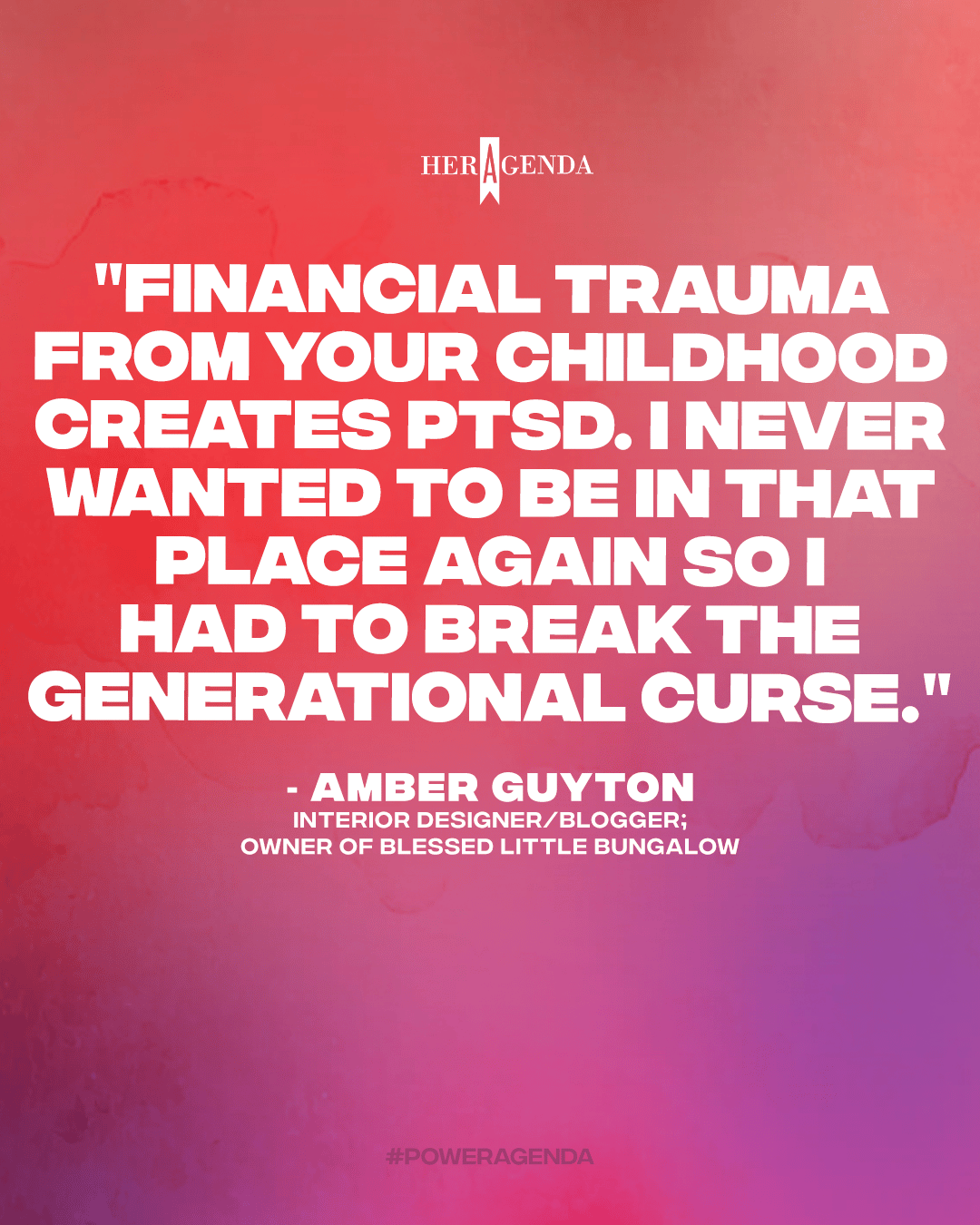
Her Agenda: You talk often about your mom pushing you to explore home design more passionately. Explain what that process was like for you deciding to pursue your passion full-time.
Amber Guyton: My mom is definitely my superhero. My parents divorced when I was four and she raised my sister and me on her own for the most part as a single parent working in Social Work. Working in this field she probably never made more than 35-40K a year raising us in South Carolina. She always made the most out of a little and made sure we were taken care of, we never felt like we were without.
A lot of the qualities I have when designing my home I learned from her. When I don’t have hundreds of dollars to spend, what are some things I can do? I began to ask myself what doesn’t require a high dollar amount that I can add to my home to curate the space I desire. I learned a lot from her about working with what you have. If I have a nice rug maybe I can just add a few pillows or some curtains to accent.
As far as taking the leap of faith and starting a business. My mother always thought I was going to be an entrepreneur. She always saw that I was creative. I was going down this marketing path, got my MBA, was working in tech, and so on, but she always thought that eventually I would work for myself. Even when I never had any interest in entrepreneurship, she always thought that eventually, that would be my path.
After I decorated my former home in San Antonio in a week and my mom and sister came to visit my mother basically called me out and asked ‘So when are you gonna do this for real?’ Three months later I hired a graphic designer to create a logo and do my website. Bought my domain and snagged all the Blessed Little Bungalow social handles and decided well if I do anything, it’s just going to be a creative outlet and I’m going to blog about my own home. That was the start of Blessed Little Bungalow.
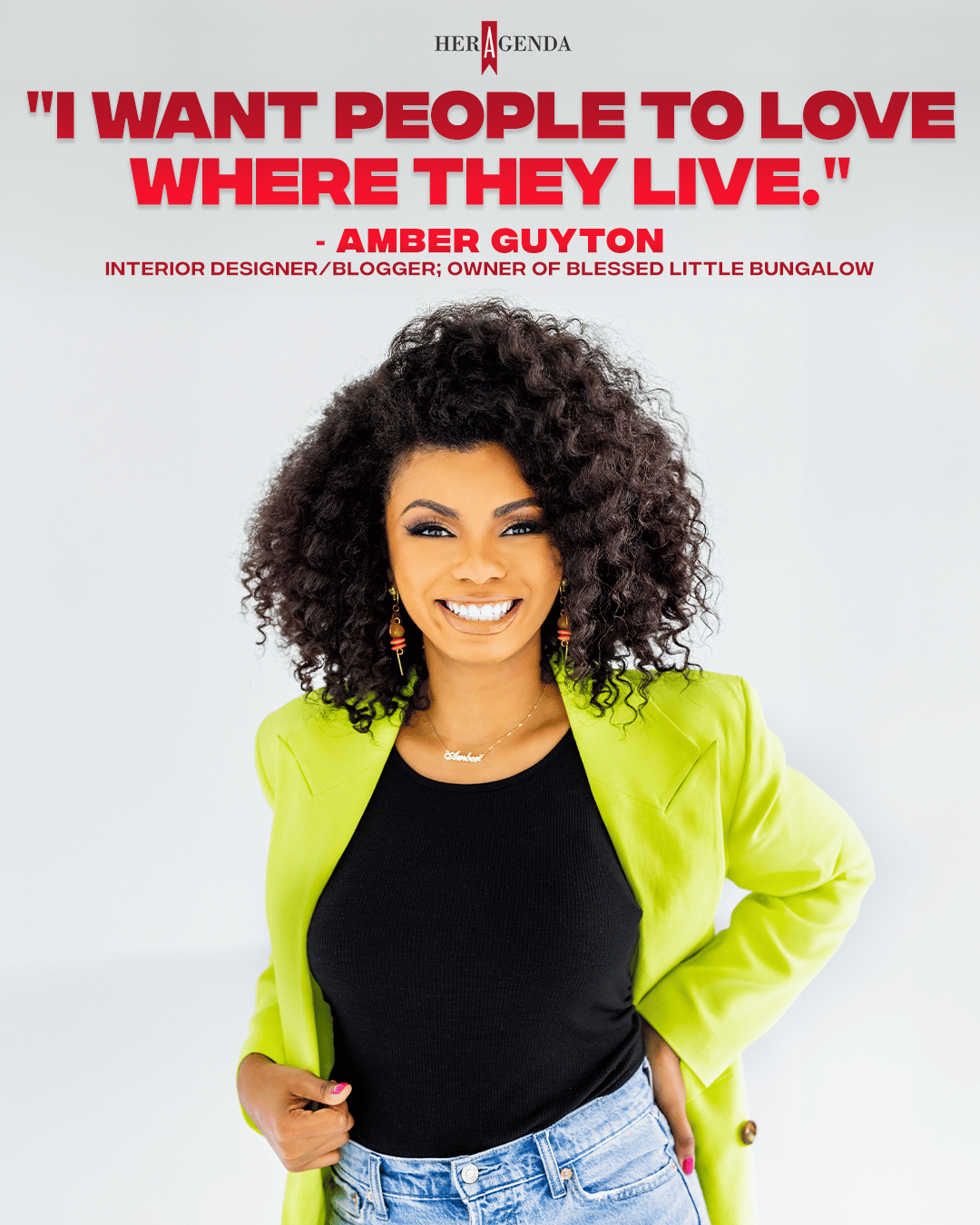
Her Agenda: You have spoken candidly about your side hustle helping to alleviate close to $100,000 worth of debt you have accumulated over the years. How has your journey to financial freedom empowered your purpose and overall mission behind Blessed Little Bungalow?
Amber Guyton: I realized when I started making more money that my habits were still the same. Until my habits and my mindset changed on how I thought about money I was going to continue to be working paycheck to paycheck and be broke. In my late twenties, early thirties, around 2016 – 2017 I reread a book, Total Money Makeover by Dave Ramsey that my aunt gifted to me. I began listening to his podcast and a bunch of other financial freedom podcasts and decided I’m going to take baby steps. I’ve got almost $40,000 in student loans from undergrad. Luckily I didn’t have any loans from grad school. I had a car loan and credit card debt that equated to $98,000 very close to $100,000. It took me 22 months to pay off the debt. Every bonus that I had from my previous employer, every tax return, and every dime that I gained through my side hustle I saved. Once my Paypal account hit that $10,000 mark I transferred it right over and paid off those credit cards. I could have more than likely taken care of my debt sooner than 22 months but I still wanted to travel and maintain somewhat of a life. It was important to me to not feel as though I was punishing myself for simply not knowing better.
Financial trauma from your childhood creates PTSD. I never wanted to be in that place again so I had to break the generational curse. I watched my mom put everything on credit cards not realizing that debt was piling up. I don’t want my clients to feel any regret in working with me to design their homes. I want them to truly love everything that they select, but also for it to be within their means. Morally, I feel that is my responsibility.
Her Agenda: What is your biggest design tip for someone on a tight budget?
Amber Guyton: Think about what’s going to be the least amount of cost but the highest impact.
One: getting a bucket of paint. Painting a space can give it an instant mood boost depending on the color that you select. Say it’s currently dark and gloomy or an old beige color on the walls. Opt for a lighter gray or lighter neutral color that’ll brighten up the space and instantly make it feel more modern. If you like brighter colors, teal and magenta are great colors to explore.
Two: Lighting! Between Amazon, Wayfair, and Overstock to name a few there are so many retailers that you can purchase new lighting. Lighting doesn’t have to cost a lot. People assume you have to stick to ceiling fans. Play around with lighting. It can illuminate a space making it feel brighter and more modern.
Lastly, accessorizing; artwork on the walls is a great way to do this. Find art that is meaningful to you, even if it’s something that you DIY. It can be something abstract and you just frame it, put it on the wall, and see how that makes you feel. Stick to accessories that inspire you. For example, new throw pillows on the sofa can be an instant change and energy boost. There’s a lot of low-cost things that you can do without knocking down walls and spending thousands of dollars on new furniture.
Her Agenda: How has living in different places influenced your design style? How has your style evolved since?
Amber Guyton: I’ve always loved color. I lean towards mid-century, modern, with some glam touches. I’ve also always loved brass and gold versus silver and other metals. My style has definitely evolved from when I was in San Antonio because my taste wasn’t as great. My ability to mix patterns and colors and create a color story has gotten much better.
I used to gravitate towards velvet materials starting off with a lot of velvet, and handloom rugs; some of those things are the same but my mind has opened up to explore less trendy more sustainable pieces. Even for my clients, I am focused now on more quality performance fabric that makes sense for their lifestyle.
Outside of living in multiple places I have found that as my skill set and client pool have grown and matured, so have I. It’s a big mistake whether you’re an entrepreneur, working in corporate no matter what your profession is you do not want to be stagnant and complacent. You always want to be learning and growing, doing better than you did before. For interior designers you are only as good as your last project. You have to have the mindset of a beginner, you’re never too big or too smart.
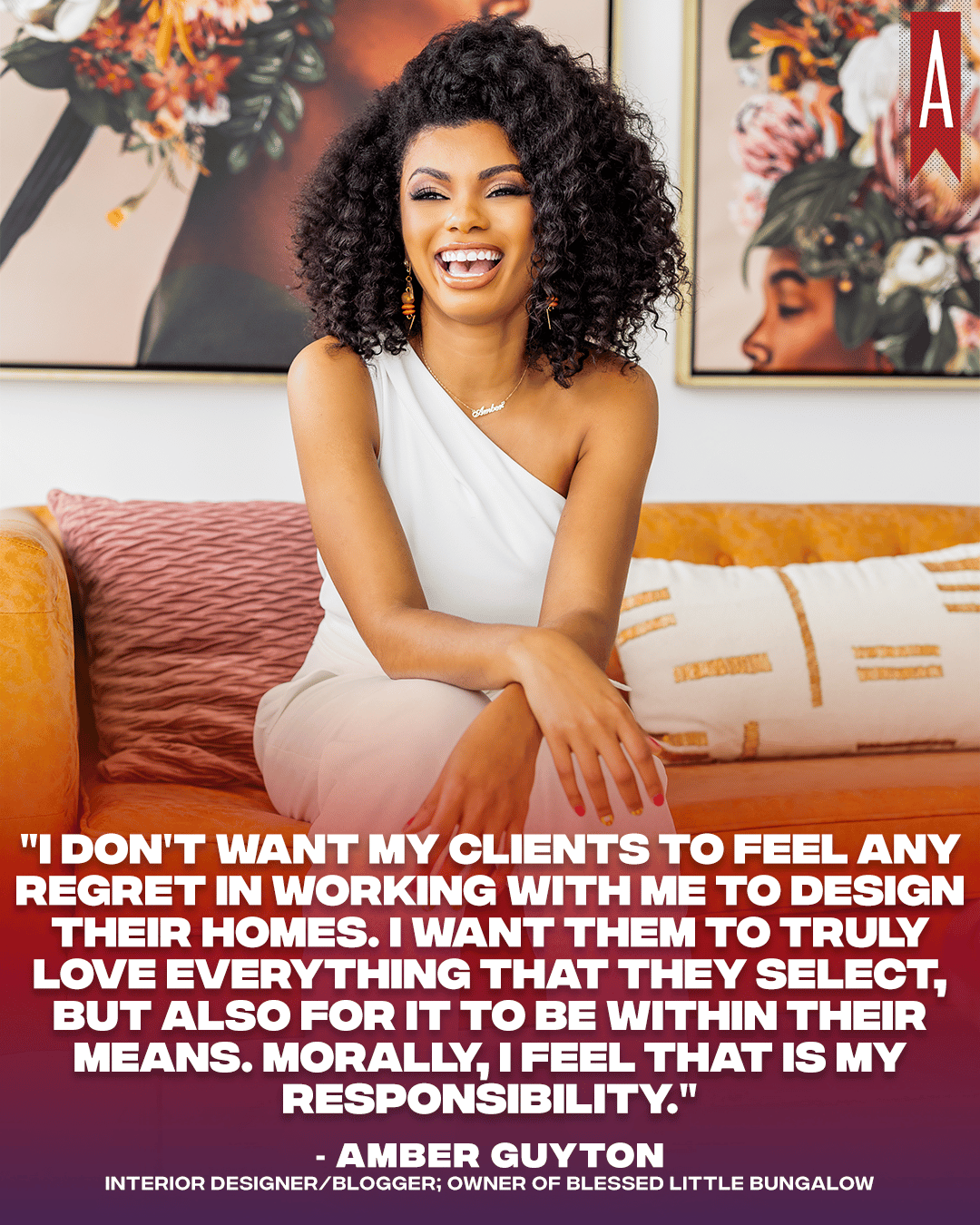
Her Agenda: What has been the most rewarding experience since starting your blog and business?
Amber Guyton: The most rewarding experience has been the lives I’m changing with the homes that I’m updating. Some clients have turned into friends seeing how as a small business, I’m supporting another small business, helping elevate families. [It’s rewarding to have] repeat clients where they worked with me when they first got married and bought their first house together and then now they have a child and want me to do the nursery.
Many of my clients are friends of each other, especially here in Atlanta. It is one of the best compliments to have repeat clients. It’s been super rewarding to see something that started off as a passion project turn into a business that allows me to creatively make people feel better each day. Recently one of my clients, who is a dentist that owns her own practice, hired me to help her design her home. She texted me the other day thanking me because she never thought she deserved or could live in some place that was so nicely decorated. When you hear something like that, you can’t help but have your eyes swell up because I work so hard to curate the perfect spaces for clients. There are things that people don’t envision for themselves and to be able to create that for them in their lives has been awesome.
Her Agenda: As an influencer, you have never shied away from speaking candidly about the ebbs and flows of entrepreneurship. What was the biggest reality check for you as a full-time entrepreneur?
Amber Guyton: Oh man the biggest reality check was I thought I would be working less, sleeping more, and owning my calendar. Technically speaking I do own my calendar, but I’ve never worked as hard and as long as I have at any point in my life until now. Even the worst job and the most toxic work environment I’ve worked in doesn’t measure up to working for yourself. It made me realize that I lack discipline and boundaries.
I hadn’t set boundaries appropriately with clients or myself. I also didn’t have as much discipline as I needed to run a business. When you’re setting your own deadlines, you are the captain of the ship and determine whether it sinks or stays afloat. You have to hold yourself accountable. There were just a lot of things that I hadn’t thought about before working for myself and work-life balance was one of them. I prioritize my availability now realizing not everything is life or death.
I am shifting my focus with the help of my therapist as to how can BLB revolve around Amber versus Amber revolving around BLB. Setting boundaries like taking off the entire month of December and preparing myself early on to be able to do that. Eventually, I want to hire more staff and get an office. For now, it is just me with the help of a virtual assistant. It’s not something people teach you before you take the leap, you kind of have to live it yourself and learn and adapt as you go.
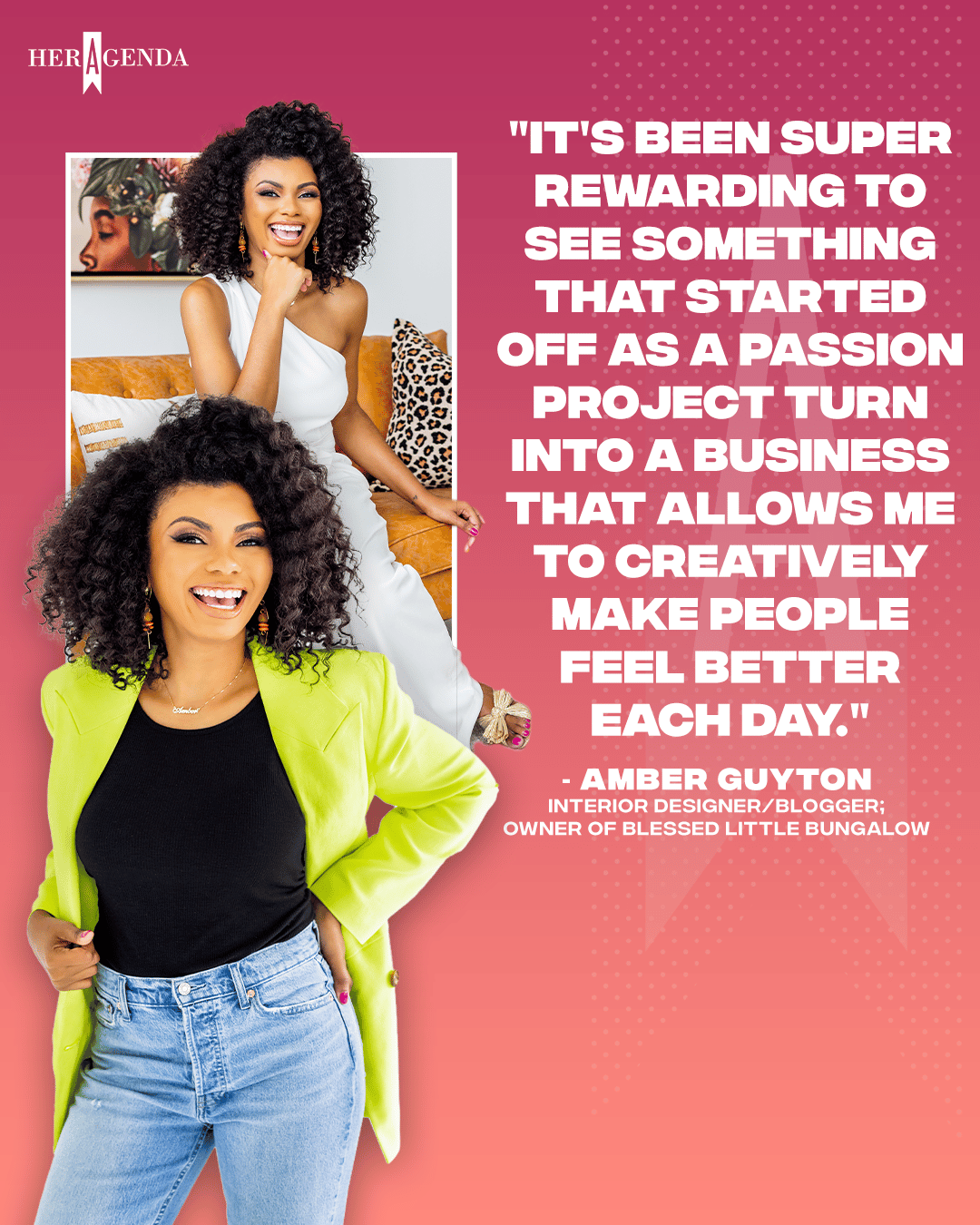
Her Agenda: How do you manage stress and anxiety when dealing with difficult clients or projects?
Amber Guyton: I’ve been fired by clients before and I have had to fire clients as well. Before starting BLB full time I’ve never been fired from a job in my life. No layoff, no furlough, no nothing. So to have clients randomly email you no longer wanting to work with you hurts. I had to realize it’s okay to tell people no. It’s okay for people to tell you no too. When I accepted certain projects, it seemed like it would be a great fit, and then as we began to work together I would realize that the project turned out chaotic and nothing was ever good enough or they were super indecisive and wouldn’t let you actually design and create. Sometimes people hire you to micromanage and for you to be more of a yes man or a project manager versus a designer.
I have had to have those difficult conversations and say listen this is what I signed up for. This is what the contract says. I don’t feel like I can give you what you’re asking for based on our interaction thus far. There are things you have to just experience, and navigate as a business owner. I have to protect my peace. I’m not too good to send somebody a refund. I’d rather give you your money back and apologize and move forward.
Whatever is for me won’t miss me. There are way too many designers and qualified people out in the world. I don’t need to bend my back or do something outside of my character in order to keep a project that probably shouldn’t have been mine to begin with. There’s enough for everyone.
[Editor’s note: This article has been edited for length and clarity.]


